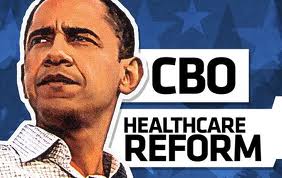Congressional Budget Office (CBO) released an updated federal budget outlook for the next 10 year “budget window.” Included in this report were some telling revisions to the previous baseline projection for the effects of the Affordable Care Act (ACA).
The first thing to note is that they have increased the number of people projected to be uninsured, and at the same time reduced the projected federal revenue from the penalty for not having insurance.
How is this possible? Recent regulations issued by the administration have restricted access to health insurance subsidies, but at the same granted exemptions to the penalty for more categories of people who cannot qualify for those subsidies. For example, an IRS regulation clarified that employers are obligated to offer coverage only to their employees, but not to their employees’ families. However, the language of the health reform law makes it clear that if the employee has the ability to get employer-sponsored coverage for himself or herself only, the rest of the family is not eligible for subsidized exchange coverage, and may end up being uninsured because they are unable to afford the full, unsubsidized premium. In this case, the IRS exempts the rest of a family in this situation from having to pay the penalty for not having insurance.
The CBO also forecasts a further decrease in the number of people obtaining health care through their employers. Six months ago, they projected that 4 million people would lose employer-based coverage, and now the projection is 7 million. This reflects, in part, an extension of the slightly lower income tax rates beyond 2012, which slightly reduces the tax advantage of employment-based insurance. Of course, many health reform watchers (including this author) think this estimate is wildly optimistic, since it doesn’t take into account the either the incentives for employers to drop their health plans, or the survey data indicating that a large number of employers plan to consider doing just that.
Of course, it remains to be seen if these projections will be close to reality. Many factors could affect the accuracy of these projections, mostly by altering the underlying assumptions. For example, people might realize that with the absence of exclusions for pre-existing conditions, it might make financial sense for healthy people to wait to enroll in health coverage until they “need” it. For most people, paying the penalty will be cheaper than paying the premium, and staying healthy for just a few years could be enough come out ahead (even if one has to pay out of pocket for care until the next enrollment period).
Also, employers might realize that in some circumstances, it will be to their mutual benefit to drop their employer-sponsored plan. If the premium subsidies – which depend on income and family size – are higher than the employer penalty (fixed at $2,000 per full-time employee) plus the tax advantage of employer-sponsored coverage – then it will be to their mutual advantage for the employer to drop coverage, pay the penalty, and split the difference with the employees. For employers with a large proportion of medium- and low-income, low-tax-bracket employees, this is quite likely to be the case.
